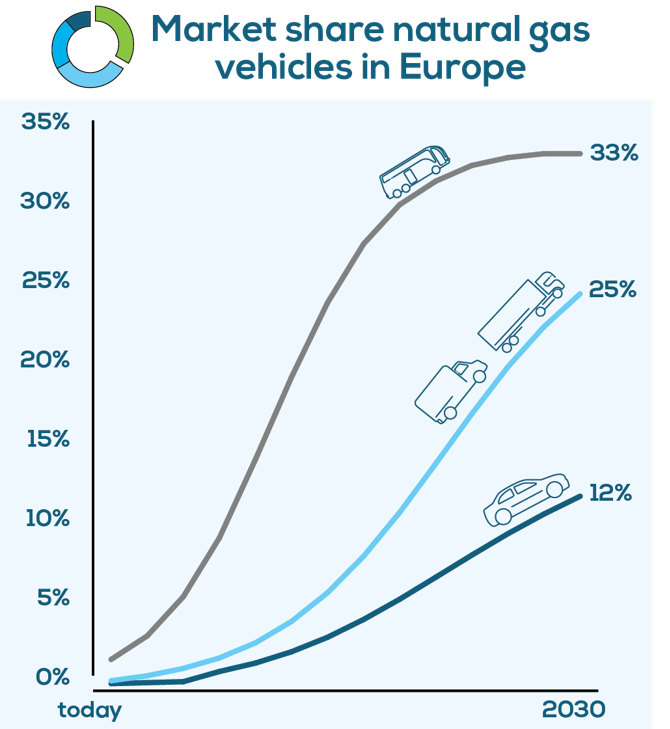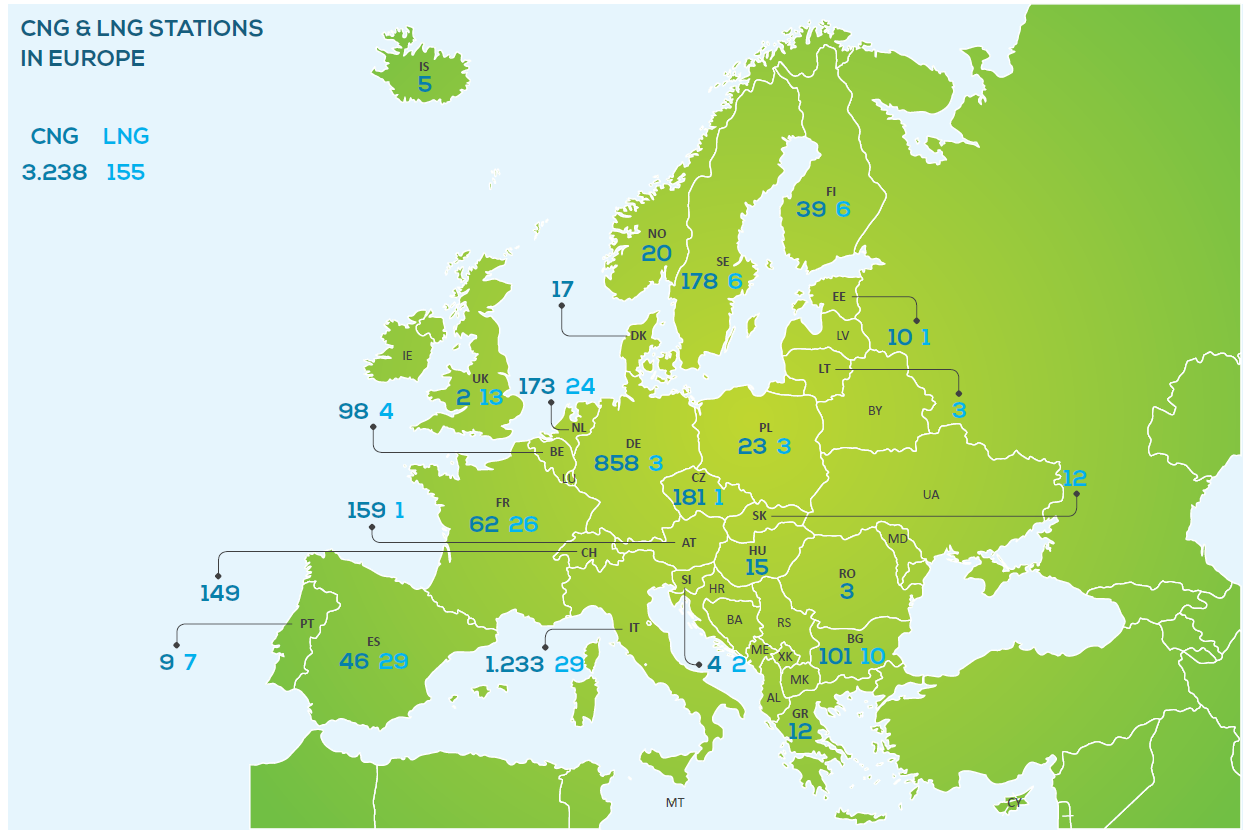

"EU Aims to Reduce CO2 Emissions of Trucks By 30 Percent By 2030"
What are the EU objectives to decarbonising road transport and what kind of activities are carried out to achieve these objectives?
In line with the Paris Agreement, the EU has recently agreed on new legislation introducing CO2 emissions reduction targets for lorries in the EU.
 The deal includes a legally binding 30% CO2 reduction target for new lorries by 2030, with an intermediate target of 15% by 2025.
The deal includes a legally binding 30% CO2 reduction target for new lorries by 2030, with an intermediate target of 15% by 2025.
Manufacturers will also have to ensure that zero- and low-emission vehicles represent a 2% market share of the sales of new vehicles by 2025. This provision aims to incentivise manufacturers to invest in cleaner alternatives to Diesel trucks.
"A Methodology Will Be Defined By 2022 To Account for CO2 Savings of Trucks"
The new law for lorries includes the development of a methodology in the upcoming years to account for CO2 savings provided by renewable gas. This is going to be defined along a revision by 2022 and will be from now on part of a discussion with the European Commission.
This is a fundamental and necessary tool for the inclusion of renewable and synthetic fuels in the range of alternatives to reach the final CO2 reduction targets which are now in place.
In fact, in parallel to the measurement of the tailpipe CO2 emissions which are necessary as indicator of the vehicle efficiency and also to provide the indication of the fuel consumption, emissions associated to the fuel provision should be considered, looking to the much wider decarbonization target. NGVA Europe is reading the methodology as positive signal to both vehicle manufacturers and biofuels producers to preserve the focus on investments.

"Number of CNG Stations Exceeds 3 Thousand 525; Number of LNG Stations Reach 182"
Can you inform us about the current prevalence of LNG and CNG in transportation vehicles?
To answer this question, we would like to refer to data of the European Alternative Fuels Observatory (EAFO) and the European Automobile Manufacturers Association ACEA. They provide data on vehicle registrations and fleet size of NGV vehicles.
In 2017, a total of 51.000 passenger vehicles (PCV) and over 8.100 light commercial vehicles (LCV) were registered (Europe + EFTA). Furthermore, 159 new CNG buses and 482 CNG trucks. Very positive numbers have also been recorded for LNG trucks with 1.642 registrations.
Until the end of 2018, CNG stations saw a steady growth to over 3.525 stations, and there is a significant growth from 100 to 182 LNG stations until the end of 2018.

What are your future predictions for fuel use of road transportation vehicles?
In 2018, NGVA Europe and the European Biogas Association (EBA) have released a roadmap document, outlining our mutual vision about the future of gas in transport and its development. In this document, the main benefits of gmobility (the ‘g’ stands for gas) were outlined in relation to the utilisation of a circular economy system.
"We Expect the Number of NGVs To Reach 12.6 Million in 2030"
Since gmobility offers clean fuel, clean air and the potential to integrate renewable, carbon-neutral fuel, we believe that the market share of natural gas vehicles will increase between 12% to 33% from today on, depending on the vehicle type. Corresponding to this, we expect a rapid uptake of vehicles – from the present 1.3 mln, to 12.6 mln NGVs in 2030. With this development, the associated infrastructure would also witness an increase in development, alongside the use of both CNG and LNG.
"Certain Countries Already Utilise Close To 90% Renewable Gas in Transport"
Considering these rapid developments, it is important to highlight the role of renewable. Certain countries already utilise close to 90% renewable gas in transport. This means, that their transport is effectively carbon-neutral. Looking towards 2030, however, on a Europe-wide level it would be safe to predict the sustained use of renewable gas, representing at least 30% of all CNG and LNG used.
Therefore, our vision represents not only a development opportunity for gmobility, but also a way to effectively tackle decarbonisation and air quality challenges in an affordable and sustainable way. Gas technology is one of the best already available solution to meet these challenges ahead.
Will LNG or CNG be more popular in the future, and what is the reason?
We expect an uptake of gas in transport as it is one of the best, most affordable and low emission solutions, which is already available on the market. This has been acknowledged by the European Institutions, for example in the Clean Vehicles Directive (CVD), or the new CO2 emissions standards for heavy-duty vehicles. OEMs are offering more dedicated natural gas vehicles, while the Alternative Fuels Infrastructure Directive (DAFI) ensures, that needed infrastructure will be in place in every European member state.

About NGVA Europe
The Natural & bio Gas Vehicle Association (NGVA Europe) promotes the use of natural and renewable gas as a transport fuel. Its 128 members from 31 countries include companies and national associations from across the entire gas and vehicle manufacturing chain. It defends their interests to European decision-makers to create accurate standards, fair regulations and equal market conditions. Furthermore, the association relies on active networks among its members to develop studies and roadmaps to support our advocacy actions with Institutions and stakeholders. It acts also as reference information hub to provide information about NGVs market and refuelling infrastructure development.
 |
 |
 |
 |
|||||
|
|
|||||||
 Küfür, hakaret içeren; dil, din, ırk ayrımı yapan; yasalara aykırı ifade ve beyanda bulunan ve tamamı büyük harflerle yazılan yorumlar yayınlanmayacaktır. Neleri kabul ediyorum: IP adresimin kaydedileceğini, adli makamlarca istenmesi durumunda ip adresimin yetkililerle paylaşılacağını, yazılan yorumların sorumluluğunun tarafıma ait olduğunu, yazımın, yetkililerce, fikrim sorulmaksızın yayından kaldırılabileceğini bu siteye girdiğim andan itibaren kabul etmiş sayılırım. |







